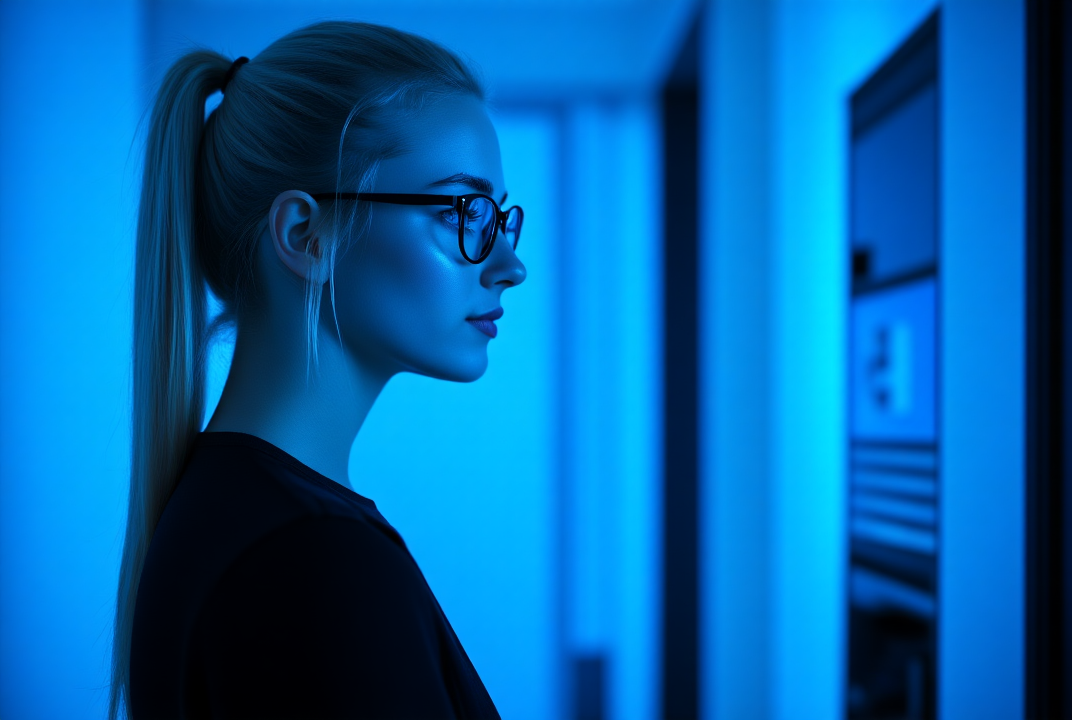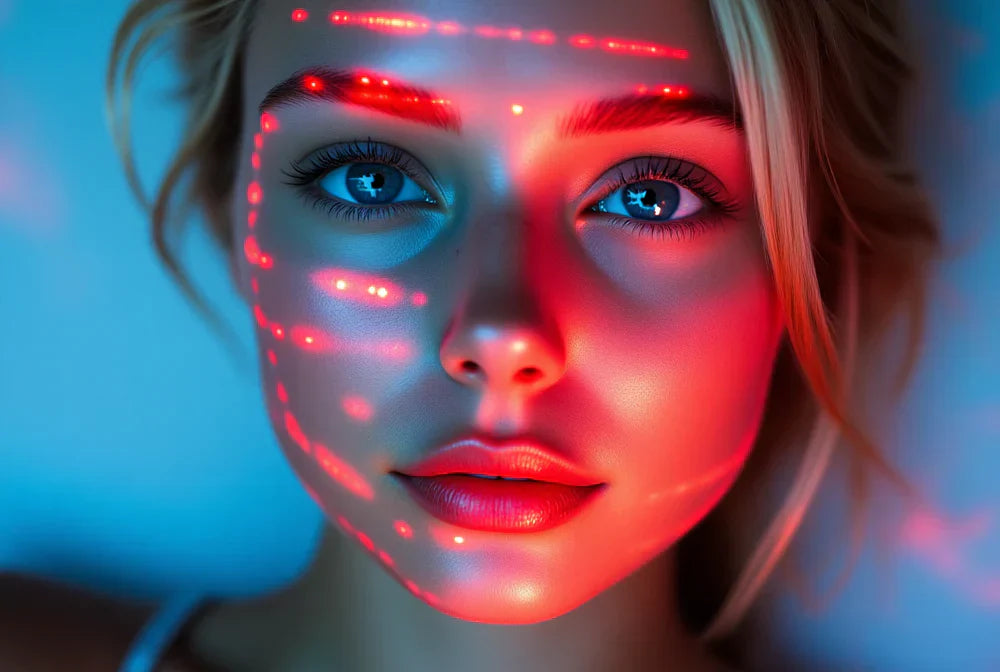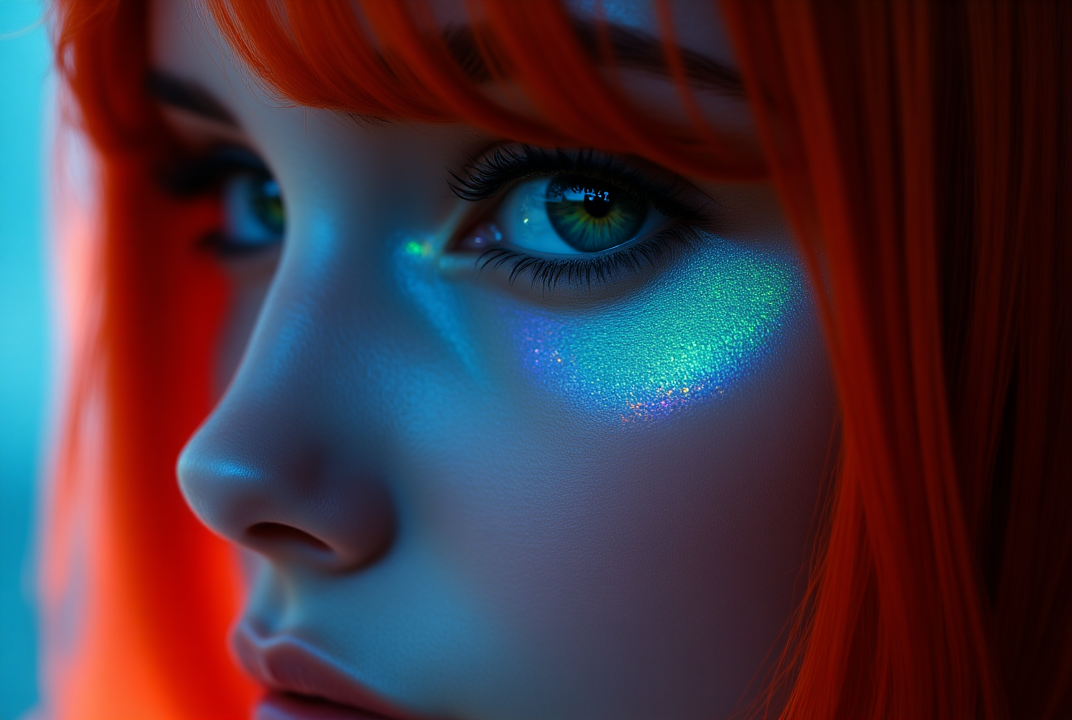Have you ever wondered how the blue light from your digital devices affects your health and well-being? As our reliance on screens grows, understanding the impact of artificial blue light becomes essential. This article explores the science behind blue light, its potential effects on our eyes, sleep, and overall health, and offers practical solutions to mitigate these impacts. Whether you're a tech enthusiast, a concerned parent, or someone seeking to improve your digital wellness, this guide provides valuable insights and actionable strategies to help you navigate the challenges of blue light exposure.
What Is Blue Light?
Blue light is a high-energy, short-wavelength light that is part of the visible light spectrum, emitted naturally by the sun and artificially by digital screens, LED lights, and fluorescent lighting. While natural blue light plays a crucial role in regulating our circadian rhythms, boosting alertness, and enhancing mood during the day, excessive exposure to artificial blue light, especially after sunset, can disrupt sleep patterns by suppressing melatonin production. This disruption can lead to various health issues, including eye strain, hormonal imbalances, and potential long-term damage to the retina. Understanding the dual nature of blue light is essential for balancing its beneficial effects with the potential risks associated with prolonged exposure to artificial sources.
Where Does Blue Light Come From In Our Daily Lives?
- Sunlight: The primary natural source of blue light, essential for regulating our sleep-wake cycles and boosting daytime alertness.
- Digital Screens: Smartphones, tablets, computers, and televisions emit significant amounts of artificial blue light, contributing to prolonged exposure.
- LED Lighting: Common in homes and offices, LED lights are energy-efficient but emit higher levels of blue light compared to traditional lighting.
- Fluorescent Lighting: Often used in workplaces and public spaces, fluorescent lights also contribute to daily blue light exposure.
- Electronic Devices: Devices such as e-readers and gaming consoles are additional sources of blue light, often used during evening hours, impacting sleep quality.
Is Natural Blue Light The Same As Artificial Blue Light?
Natural blue light, primarily emitted by the sun, plays a vital role in regulating our circadian rhythms, boosting alertness, and enhancing mood during daylight hours. It is essential for maintaining a healthy sleep-wake cycle and overall well-being. In contrast, artificial blue light, emitted by digital screens, LED lights, and fluorescent lighting, can be detrimental, especially when exposed to it during evening hours. This synthetic exposure disturbs melatonin production, which causes sleep problems and maybe long-term health problems like hormone imbalances and eye strain. Although human health depends on natural blue light, too much artificial blue light calls for careful control to minimize its detrimental consequences.
Can Blue Light Exposure Impact Sleep Quality?
Yes, blue light exposure can significantly impact sleep quality by interfering with the body's natural circadian rhythm. Blue light, particularly from artificial sources like digital screens and LED lighting, suppresses the production of melatonin, the hormone responsible for regulating sleep. When exposed to blue light in the evening, the body's internal clock is disrupted, leading to difficulties in falling asleep and reduced sleep quality. A slew of health problems including more stress, poor cognitive ability, and hormone abnormalities can follow from this disturbance. Knowing how blue light affects sleep allows people to be proactive in improving their sleep quality and general well-being by using blue light blocking glasses or cutting computer time before bed.
Does Blue Light Contribute To Digital Eye Strain?
Yes, blue light contributes to digital eye strain, a common condition experienced by individuals who spend extended periods in front of screens. The high-energy, short-wavelength nature of blue light scatters more easily than other visible light, making it difficult for the eyes to focus. This scattering effect forces the eyes to work harder, leading to symptoms such as dryness, irritation, blurred vision, and headaches. Prolonged exposure to blue light from digital devices exacerbates these symptoms, as the eyes are continuously strained to adapt to the intense light. By incorporating strategies such as using blue light blocking glasses, taking regular breaks, and adjusting screen settings, individuals can alleviate digital eye strain and protect their eye health.
How Does Long Term Blue Light Exposure Impact Us?
- Retinal Damage: Prolonged exposure to blue light can damage the retina, potentially leading to conditions like macular degeneration, which affects vision clarity and health over time.
- Disrupted Circadian Rhythm: Continuous exposure, especially during evening hours, can disrupt the body's natural sleep-wake cycle, leading to chronic sleep disturbances and associated health issues.
- Increased Risk of Hormonal Imbalances: Long-term blue light exposure can elevate cortisol levels, contributing to hormonal imbalances such as reduced testosterone and other endocrine disruptions.
- Mitochondrial Damage: Long-term exposure to blue light can harm the mitochondria, the energy-producing structures within cells, potentially leading to decreased cellular function and vitality.
- Elevated Stress and Inflammation: Chronic exposure can increase reactive oxygen species (ROS) and inflammation, raising blood sugar and insulin levels, which may contribute to metabolic disorders.
What Are The Most Effective Ways To Reduce Blue Light Exposure?
An efficient tool for lowering blue light exposure—especially from manmade sources like digital screens and LED lighting—are blue light filtering sunglasses. These glasses are made with particular lenses that filter out significant amounts of blue light, therefore reducing eye strain and avoiding disturbance of the circadian cycle. Particularly in late hours, blue light blocking glasses help people guard their eyes from the negative consequences of extended computer use, including digital eye strain and sleep problems. These glasses come in several designs and filtration levels so that customers may select ones fit for their daily use as well as for evening. In our society dominated by screens, including blue light blocking glasses into daily activities can greatly improve visual comfort and support general well-being.
Where Can I Buy The Best Blue Light Blocking Glasses?
At EMR-TEK, you can find some of the best blue light blocking glasses designed to offer comprehensive protection against artificial blue light exposure. Their collection features glasses that block 100% of blue light in the evening range (400-570nm), including green light, ensuring optimal melatonin preservation and improved sleep quality. Long-term use of EMR-TEK glasses is appropriate since they are made for comfort and robustness. Furthermore appealing to buyers with an eye for design, they provide chic ideas fit for both business and leisure environments. Selecting EMR-TEK means making investments in premium eyewear that supports eye health and improves general well-being in our society dominated by screens.
Blue Light 101
- Dual Nature of Blue Light: Blue light is beneficial during the day, enhancing alertness and mood, but can be harmful at night, disrupting sleep patterns by suppressing melatonin production.
- Sources of Blue Light: While sunlight is the primary natural source, digital screens, LED lights, and fluorescent lighting are significant artificial sources that contribute to daily exposure.
- Health Impacts: Excessive blue light exposure can lead to vision problems, dry eyes, digital eye strain, retinal damage, disrupted circadian rhythms, and increased risk of hormonal imbalances and metabolic disorders.
- Mitigation Strategies: Effective ways to reduce blue light exposure include using blue light blocking glasses, adjusting screen settings, limiting screen time before bed, and incorporating warm lighting.
- Lifestyle Balance: Combining blue light reduction techniques with healthy lifestyle practices, such as regular breaks from screens and maintaining a consistent sleep schedule, can optimize overall well-being.
Conclusion
In conclusion, understanding the dual nature of blue light is essential for navigating the challenges of our modern, screen-centric world. While natural blue light is crucial for maintaining our circadian rhythms and promoting alertness during the day, artificial blue light exposure, particularly in the evening, poses significant risks to our eye health, sleep quality, and overall well-being. By adopting effective strategies such as using blue light blocking glasses, adjusting screen settings, and limiting screen time before bed, we can mitigate these risks and foster a healthier relationship with technology. Embracing these practices not only enhances our digital wellness but also supports a balanced lifestyle, empowering us to thrive in an increasingly digital age.
Final Thoughts
Are you ready to enhance your digital wellness with innovative solutions? Explore EMR-TEK, where products are designed to seamlessly integrate into your lifestyle. Whether you need a portable device for on-the-go convenience or a comprehensive system for home or professional use, EMR-TEK offers the perfect solution. Their expertly crafted blue light glasses are essential for reducing eye strain and protecting your vision. Additionally, discover their range of red light therapy products to embark on a journey towards healthier, more radiant skin today.
Sources
- https://en.wikipedia.org/wiki/Blue_light_spectrum
- https://www.everydayhealth.com/wellness/what-is-blue-light-a-complete-scientific-guide/
- https://time.com/5752454/blue-light-sleep/
Disclaimer:* EMR-TEK’s red infrared light therapy devices, blue light blocking glasses, and other products are intended solely for personal wellness and fitness use. They are not designed to diagnose, treat, cure, or prevent any disease and should not be considered medical devices. We do not make any therapeutic claims. Our products align with the FDA’s “General Wellness: Policy on Low Risk Devices” guidelines and do not require FDA clearance. Please note, EMR-TEK’s products are for personal use only and not for commercial application.*




Share:
Blue Light Filters vs Glasses: What’s The Difference?
How To Turn Off Blue Light On iPhone: Step-by-Step